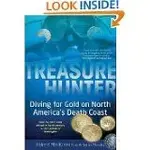Hey Dave... yeah, maybe it would be good to move the Kensington Runestone ideas to a different thread. Although the KRS is not mentioned on the show, which this thread pertains to, I do believe that the KRS could very well have something to do with the Knights Templar theroy. I know you do question it's authenticty, I am not here to change your mind. As you say, the jury is still out.
I question the authenticity of the KSR, but I understand that it may very well be legit. There's more to be learned about it. However, attempting to tie Oak Island to the Templars, and the KSR to the Templars, and thereby the KSR to Oak Island requires some fairly large leaps of logic.
The year on it, 1362, does jive with many different things involved with Oak Island. It is my belief that a scouting party was sent out by Henry Sinclair about that time. To get to Kensington, Minnesota, the party would have had to pass thru the Oak Island area. The carbon dating of the coconut fibers (maybe off by 400 years) was still dated to the same time frame as well. This does not mean that the scouting party buried Knights Templar treasure there at that time, but coincidences don't happen often in history. The "Hooked X" offers a direct tie to Henry Sinclair, the Knights Templar, and Rosslyn Chapel in Scotland. The "Hooked X" also ties in with Christopher Columbus, who, thru marriage, had ties with the Templar and FreeMasons. Remember that the "Hooked X" wasn't really deciphered until about 1935, many years after Olaf discovered the KRS. In essence, Olaf could not have known about it if he indeed scribed it himself. Plus, he probably did not know about the double dating technique as in the easter table.
There are some problems with this. To wit:
- In 1362, Sinclair was a mere baron and had been for only 4 years. He was in his late teens. I will not state definitively that he lacked the resources, the motivation, and the knowledge to launch an expedition to the New World, but I'd say that it's a reasonable estimate of the situation. He would not be a person of import for another 15 years or so, as the king was not yet making Scottish earls.
- Construction on Rosslyn Chapel didn't even begin until 40 or 50 years after Sinclair had died; it had nothing at all to do with him. Likewise, this was around 150 years after the Templars had been dissolved. Sinclair himself was born decades after the Templars had disbanded. The Sinclairs contemporary to the Templars were not their friends. I do not see the connection here at all.
- Columbus also hooked his Y's. While hooks on carved letters
might mean something (such as "In Christ," which the demonstrably non-Templar examples are generally interpreted to mean), hooks on written letters probably don't. Hooked letters are not uncommon in handwriting. It happens when you remove the quill (or pen) from the paper to make another stroke and set it down just a bit early, while still moving to the starting point for the next stroke. Also note that hooked X's have been found in places were the Templars almost certainly weren't active. It's not so rare as some writers would have us believe. An X in particular would be an easy one to hook on the second stroke...as would a Y, which is written in nearly the same way.
As both you and I are not experts in this field, we both can only watch and wait until definitive proof is found. I don't have time to become and expert, I am just a lowly guy who paints trailers, turning tanks into Mona Lisa's... hahaha... BUT, if you believe it warrants a new thread topic, I will happy to frequent it and post accordingly. As it sits, there is no proof that the KRS is authentic, with which I agree with you. If It is, it is a start toward many unsolved questions. It is a starting point which could be the biggest find since the Dead Sea Scrolls.
Indeed. I worry that regardless of the value that our discussion may or may not have, we're hurting the signal-to-noise ratio in this particular thread. But yes, I'm certainly no expert myself. I'll be the first one to admit that.
And the cistercian monk situation... many explorers of that day, being very religious, took along a monk of their religious practice to help keep a party brave in the face of danger.
That is not proof. The inscription mentioned the numbers and the nationalities, but nothing else. There certainly may have been a monk present, but we don't know that. We can only speculate, and speculation often gets people in trouble. It should never play a foundational role in a theory.
Thank you for being interested. It does take an open mind. Many situations in history were poo-pooed until proven correct. This one deserves an open mind as well. I could be wrong. You could be wrong. Hell, we BOTH could be wrong. Investigating a little bit doesn't hurt. I'll freely admit if I am wrong, but it does not negate the fact that you and I both, with others, did come up with some ideas.
Situations should be poo-pooed in history, or any science, until proven otherwise. Skepticism is a forge for theories - good theories come out better, and bad theories come out broken. Skepticism keeps us honest in our pursuit of truth.





